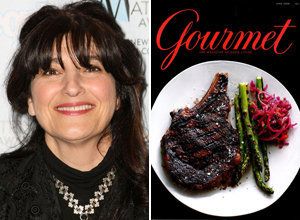
I have often thought that some of the things I have done have turned out exactly opposite to what I'd hoped for. In 1959 or '60 I revealed in the now defunct Reporter magazine that Spyros Skouras, then CEO of Twentieth Century Fox, had provided Nelson Rockefeller with a camera crew to cover Nelson's campaign for Governor of New York, when he ran against the incumbent, another millionaire, Averill Harriman. In those days, few stations had camera crews to cover election news unless the events were in their town, so when free film arrived showing Rockefeller on the campaign trail they ran it in their news shows. Nelson won the election, and I thought what Skouras did was awful. I hoped others would think so too, but many other political professionals thought it was a great idea, and so Nelson Rockefeller became known as the father of the video news handout.
When I started CNN, I thought we could change the world by showing things just as they were happening and letting people know what was really happening in the world around them. I knew our veteran correspondents, like Bernie Shaw, Dan Schorr, Bill Zimmerman or Mary Alice Williams, would play it straight. CNN has transformed into a showcase of political opinions with brief film clips occasionally interrupting the chatter of the ignorami who then debate which political party will benefit from the film clip that has just been aired. CNN was designed to shed light on the news. Now it generates heat about the news. Borrowing a phrase from Pat Buchanan (whom I hired for the original Crossfire) and/or Bill Safire, CNN has now become another podium for the "nattering nabobs of negativism."
When I started the Food Network, I was sure we would do no harm. How could programs showing world class chefs concocting wonderful meals hurt anybody? How could learning about healthy eating or how to lose weight or where the best restaurants were, how could that hurt anybody? We hired Julia Child and bought all her old shows from PBS. We showed Jacques Pepin's PBS shows and did a documentary about him. Marion Cunningham, the west coast disciple of James Beard, and Barbara Kafka, his east coast disciple, both did shows for us. We found bold new chefs, like Emeril (who made it possible for American men to cook with no suspicions about sexual orientation), Mario Batalia and Bobby Flay, and turned them into TV stars and nationally recognized brand names. Ruth Reichl (wearing a wig to disguise herself from the New York restaurateurs whose restaurants she critiqued for The Times) did a week's cooking with Ms. Cunningham.
But television is a funny business: When you ask most people what's the product of television, the answer you get is "its programs." But television doesn't sell its programs, it sells its audience. Television gets its money from advertisers who pay x-dollars for every thousand viewers of certain demographic characteristics that the program delivers. In other words, the "mass audience" is much more important than the "class audience." So, the original Food Network, which was "classier" than the current network, delivered a .3 rating when I was there. My successors have doubled that rating, and they have done it by making stars out of people like Rachel Ray. Julia Child's first question to chefs was, "And where did you train, dear?" Nobody gives a damn where Rachel Ray trained. She delivers a mass audience.
Condé Nast shut down Gourmet last week. It's keeping Bon Appétit up and running. Bon Appétit has about 350,000 more subscribers than Gourmet, and it costs far less to produce. It's basically a recipe magazine, while Gourmet, under Ruth Reichl's editorship, sent writers throughout the United States around the world to find the very best of the best. She used the best photographers, the best stylists, and the best editors, and she produced one of the world's best upscale magazines. But Condé Nast, which also sells its advertising based on the size and demographics of its subscribers, decided to go with mass instead of class, and closed it down.
I guess it was inevitable, but I'm still feeling guilty. I knew there was only so much food advertising money, and it was my job to make sure that the Food Network got a large chunk of it. The Food Network is now extremely profitable, and Gourmet was not. But who (besides Ted Turner) would've thought that the Food Network would've helped put Gourmet out of business? Who would've thought that national advertising on CNN would hurt The New York Times? But television has done that, and in the process it has helped dumb down the American public. When institutions like The New York Times and Gourmet, that prided themselves on the intelligence of their product are threatened or destroyed by TV networks whose only consideration is how many viewers or subscribers they have, we are all in trouble because when it comes to numbers, mass always beats class. So, when it comes to class warfare, Gourmet is the loser, and I worry about the future of The New York Times.
The only good thing that's come out of this is last week's ratings, which show that the Food Network has once again gotten more viewers in all the demographics than FoxNews, which by my methodology proves that in America eaters outnumber haters, at least among people under 55.